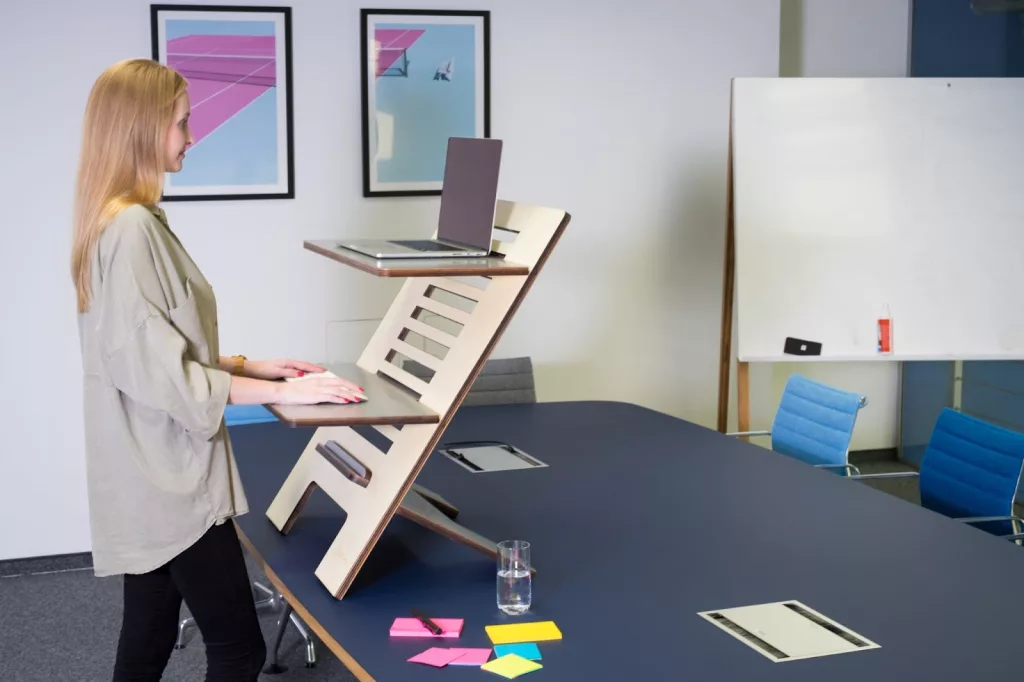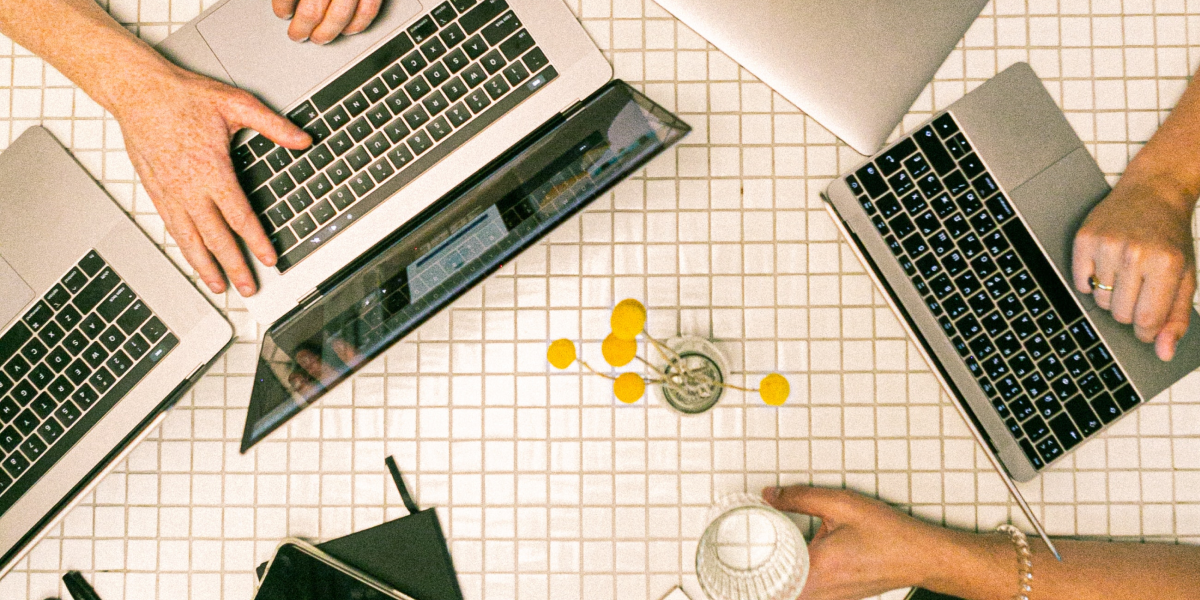Why routine and familiarity is difficult to find with hybrid work and how finding it can be key to productivity and engagement.
Five years ago, you might head into the office to sit at an assigned desk inside the same office. You might greet the same leafy plant and pinned child’s drawing every day, recognize the unique scent of the carpet, and notice the familiar lighting in the early morning. Familiar faces surrounded you—people who also had their own personalized spaces.
With hybrid work, nothing is the same. You may work at a coffee shop, a hotel lobby, the kitchen table, or at an unassigned desk or conference room inside the office. You may or may not see the same people each day. You never know what you’re going to get.
The unknown—such as not knowing where you’re going to open your laptop the next day—can lead to anxiety and exhaustion. You may miss the routine of seeing people you know and have fewer chances to talk and interact with colleagues, and research has found that even those small interactions can lead to more happiness.
There’s something to be said about familiarity: it’s been shown that keeping to a routine stabilizes workflow and boosts creativity. Today’s workforce is in need of some help: productivity is at an all-time low, mental health has become a crisis and employee burnout and disengagement rages beneath the surface.
Afterall, everything has changed about the way we work. In years’ past, decorating your office space was part of office culture, whether it was the photos, ornaments or diplomas, all of which gave a hint to who you were as an individual. Research shows that the more an employee feels like they have “place identity,” the more attached they become to their employer. That ultimately leads to more satisfaction and more productivity.
But today’s trend of hot desking, you share your workspace with others—arriving at a bland desk and leaving it equally empty at the end of the day with no personal sense of place or familiarity. “It’s comparable to walking into a library to study: you may get work done, but it’s an impersonal space that will never feel like yours,” Sunkee Lee, Carnegie Mellon University assistant professor of organizational theory, told the BBC.
So how do you create familiarity in the hybrid workworld?

Some companies are using architecture to help workers think of the entire floor as a place of belonging—not just a desk—and they’re bringing in employees to co-design these larger spaces. Each room can offer a different atmosphere that’s familiar—whether it’s the lighting or the acoustics or types of furniture.
“It’s still important to give people a sense of belonging in a physical space,” Gensler studio director Chris Crawford tells the BBC. “It’s about enabling people to choose their own workday, through spaces that offer variety, choice and differentiation so they intrinsically feel ‘this place works for me’.”
Remote working can also be challenging. One study found that working from home without a specific space, desk or room can be associated with lower performance, job satisfaction and engagement. Experts say younger workers who may not have an ideal workspace at home should be given more time in the office for routine—or offered a third workspace option to get work done.
Whether in the office or remotely, familiarity and routine can go beyond the physical. Recognizable and pleasing scents have been shown to make a tiny bit of a difference in productivity, and the same goes for music you love. If the music is high energy and a tune you already know, it can help you get into the optimal flow state for productivity, as well as improve creativity and productivity. University of Miami researchers also found that creatives who listened to music completed their tasks quicker and came up with better ideas than those working in silence. By contrast, research shows that when we listen to unfamiliar music, we’re more likely to lose focus—because we’re trying to adjust to the new sound.

Daisy Squire, a PR executive in the UK, says she tries to keep a regular routine for when she works remotely, starting with listening to the radio and drinking coffee at the same time each morning, eating lunch at the same time, and then changing her working location halfway through the day so not to “feel suffocated by any monotony or isolation.”
“Working remotely requires a lot of self-discipline and effective executive functioning skills,” says Squire, “so if I can make the things in my control as predictable and mundane as possible, then any chaos that is thrown my way during the workday can be mitigated.”
Familiar people at work also make a huge difference. Once you get to know the people on your team, not surprisingly you can better understand how they think and what they’re good at. Ultimately, that greases the wheels for efficiency and communication, whether you’re working together physically or remotely. Harvard researchers found that familiarity on your team also aids when you’re solo, working on independent unique tasks. With that in mind, research shows it’s a good idea to keep existing teams together.
Routine can also be established with hybrid work when managers and teams plan ahead and coordinate when they’ll work together in the office and when they’ll work remotely.
“There’s nothing worse than making the commute to the office and you spend the day on Zoom because no one is there,” says Rob Sadow, whose firm, Scoop Technologies, makes software for hybrid work scheduling. He says more companies are embracing “structured hybrid” schedules that outline a set number of days. They leave it up to teams and individuals to create an initial plan for work in the office a week prior, based on who else is going to be in the office and their personal schedule. A day prior, software then sends everyone a snapshot that shows where everyone will work and who will be in the office.
Companies are also investing in off-site events or meetings every few months. The familiarity and connection that is created can be more meaningful than working together side-by-side five days a week, he says. “They have lasting positive impacts,” Sadow says.
Ultimately, both employers and employees must find ways to create familiarity in the hybrid workworld, whether it’s through physical space, people, schedules or sensory input. Knowing what’s next might just have some unexpected—and great—results.
